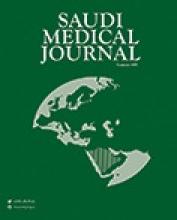Abstract
OBJECTIVE: To evaluate the factors affecting the choice of anesthetic technique for cesarean section in women with placenta previa.
METHODS: In this retrospective study, the records of the Labor Ward Theatre of the University of Benin Teaching Hospital, Benin City, Nigeria were examined from January 2000 to December 2004 to identify all the women who had cesarean section for placenta previa. The patients' socio-demographic characteristics, type of placenta previa, anesthetic technique, estimated blood loss, maternal and fetal outcomes were recorded.
RESULTS: One hundred and twenty-six patients had cesarean section for placenta previa, however, only 81 patients 64.3% were available for analysis. General anesthesia was administered to 52/81 patients 64.2%, and 29/81 patients 35.8% received spinal anesthesia. A history of antepartum bleeding was recorded in 61.7% n = 50. Of the 31 patients without antepartum hemorrhage APH, 15/31 had general anesthesia, and 16/31 had spinal anesthesia. The patients who had APH, 37/50 had general anesthesia, and 13/50 had spinal anesthesia. There was an increased chance of using general anesthesia if APH were present p=0.03, odds ratio = 3.1, 95% confidence interval = 1.2-7.8.
CONCLUSION: Spinal anesthesia may be useful in patients with placenta previa. The presence of APH may encourage the use of general anesthesia for cesarean delivery.
- Copyright: © Saudi Medical Journal
This is an open-access article distributed under the terms of the Creative Commons Attribution-Noncommercial-Share Alike 3.0 Unported, which permits unrestricted use, distribution, and reproduction in any medium, provided the original work is properly cited.






